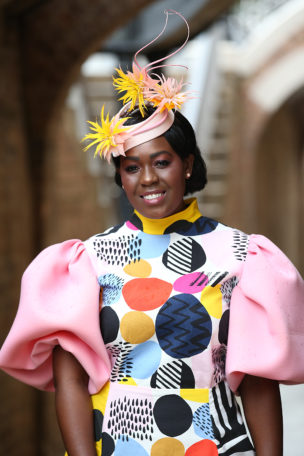The world is all about instant gratification and the fashion industry is not immune. You might find this hard to believe but the fashion industry is the second largest industrial polluter after aviation.
This is due to our craving for fashion trends at affordable prices with little thought about where the item was made or under what circumstances. In the industry, this is referred to as fast fashion.
I call it disposable fashion because these items are not made to last.

It is fashion that is on-trend, badly made from inferior quality fabrics with a short lifespan and usually churned out in countries where wages are substandard. Yet most of us are guilty of purchasing these items. The huge stores that sell disposable fashion have a massive turnover of stock in their desire to keep up with fashion trends; you can visit a store, see an item you like and less than a week later it’s no longer there.
The mind boggles as to how these items can be created and sold so cheaply but do we stop to question the origins when we are surrounded by racks and racks of trendy fashion items?! Personally, I hate to wear something that everyone else is wearing instead of favouring well made, timeless classic designer brands which I can find in second-hand stores. However, I admit to buying one or two fast fashion items from time to time. Alternatively, I wait for the sales in smaller pricier stores that always offer hefty discounts which do make one wonder what mark-ups these stores are using!

I could blind you with statistics about the environmental impacts of disposable fashion from the amount of water used, the chemical pollution and CO2 emissions. And let’s not forget the amount of textile waste most of which ends up in landfill, incinerated or is exported to developing countries often from where it originated!

However, I’m sure we are all aware that disposable fashion is not sustainable and that significant changes need to be made to reverse this. Research carried out by academics from Finland, Sweden, USA, the UK, and Australia, highlights the need to put the brakes on the manufacturing process and introduce more sustainable practices throughout the whole supply chain to create a slower fashion business model.
Here’s a good place to start – currently there is a growing interest in fashion rental as well as repair and remanufacturing of items which would enable the consumer to retain their clothes for much longer. For example, Swedish brand Nudie Jeans has been offering customers a repair and re-use service for quite some time. Could you be persuaded to rent, repair or re-use your clothes?
Whatever happens in the future, we all need to do our part to create a slower fashion model from the textile designer to the fashion industry, policymakers and finally to us the consumers. As the end-users, we must change our habits and be prepared to pay higher prices for our clothes. Are you ready for that?
The Carousel would like to thank Angela Bunt for her article. Her website is https://www.angelabuntcreative.com/







